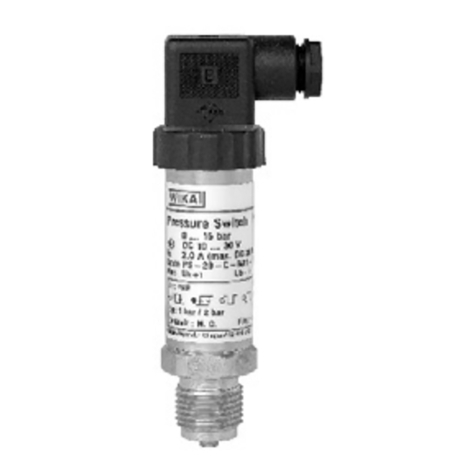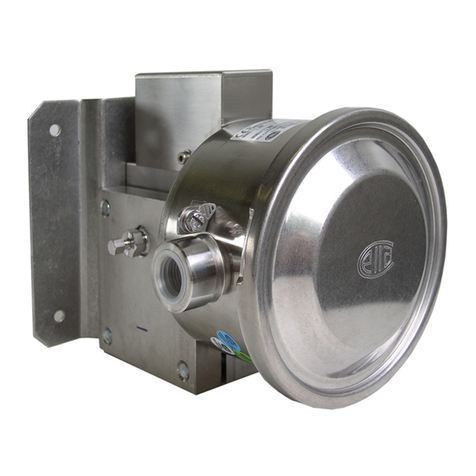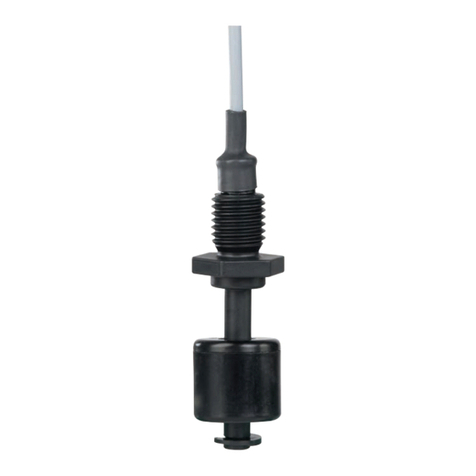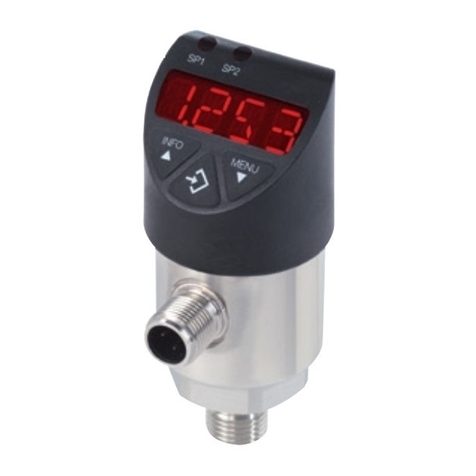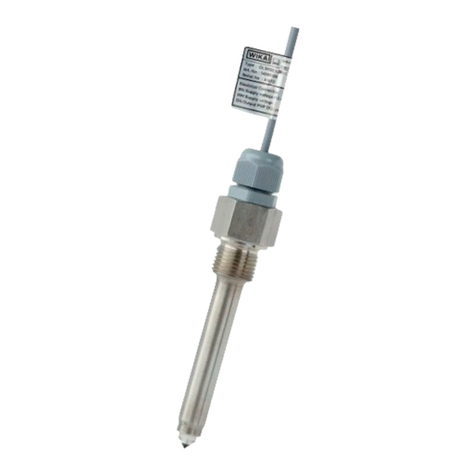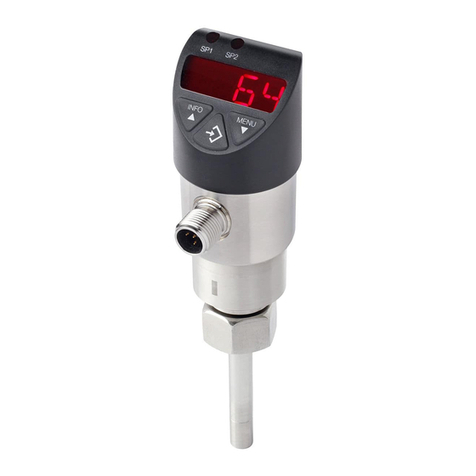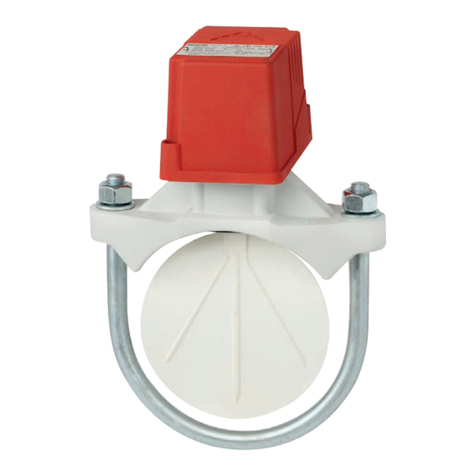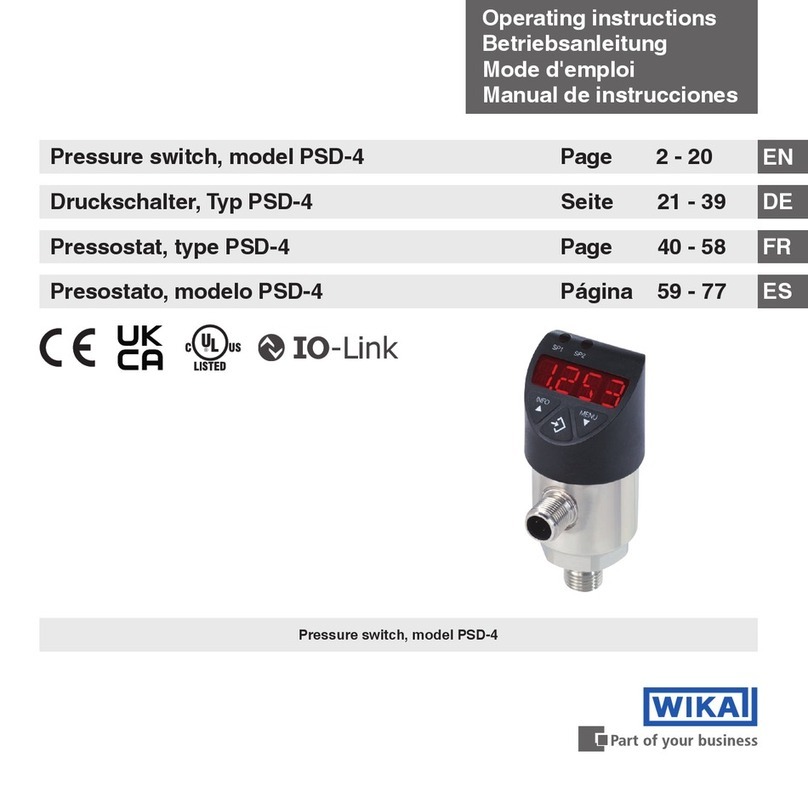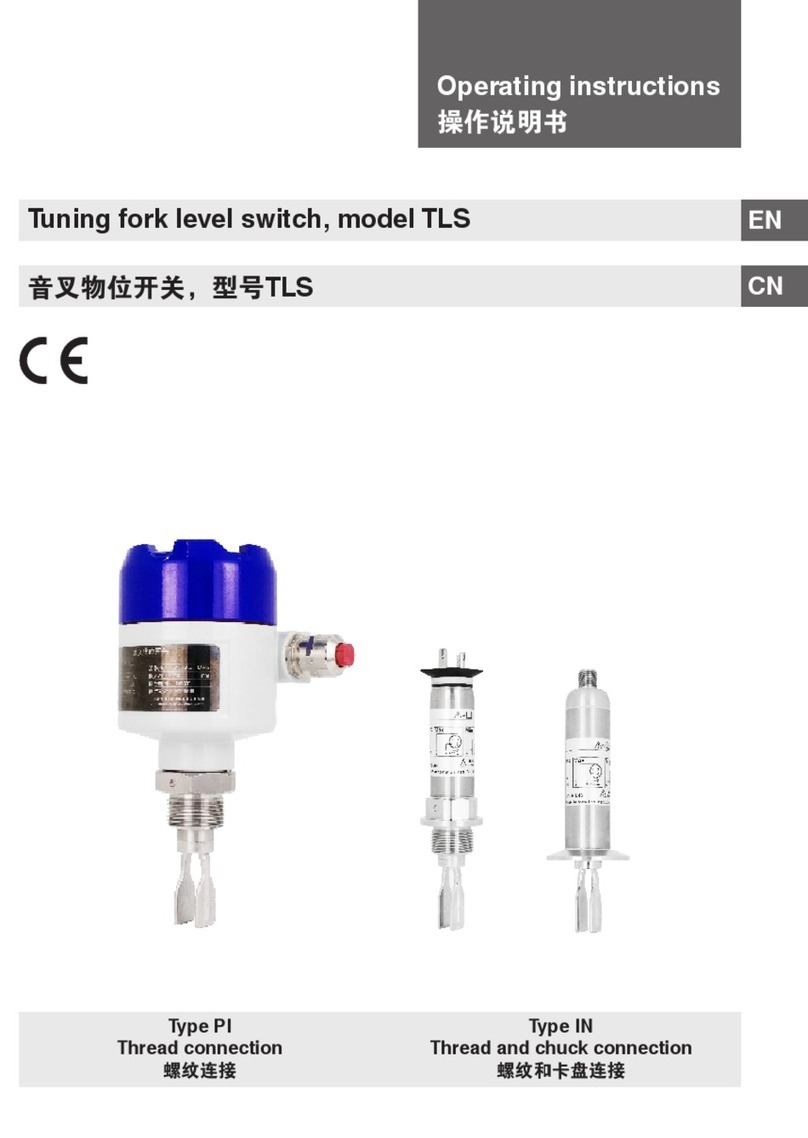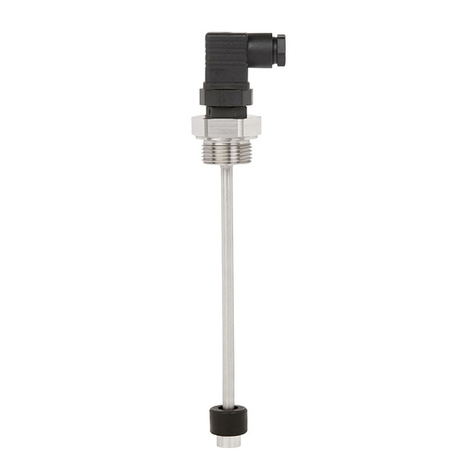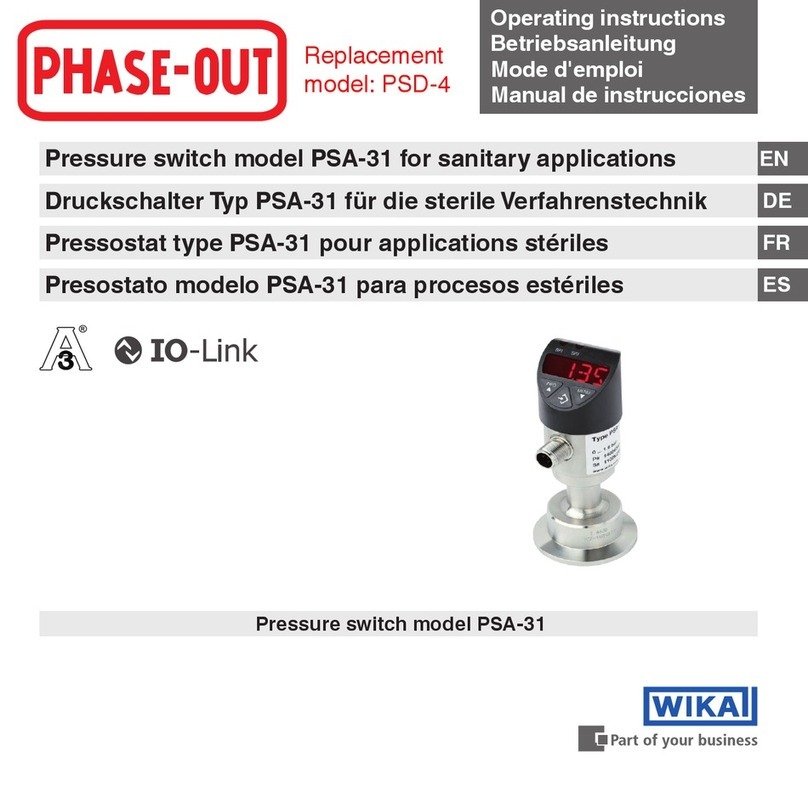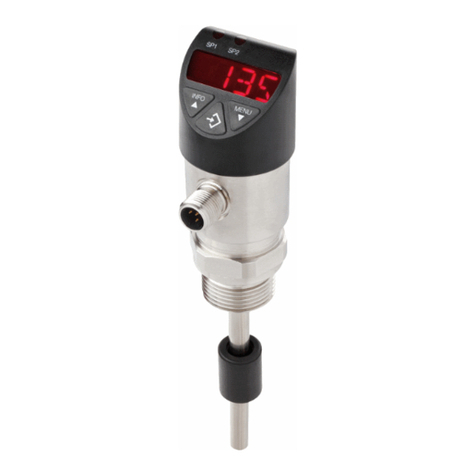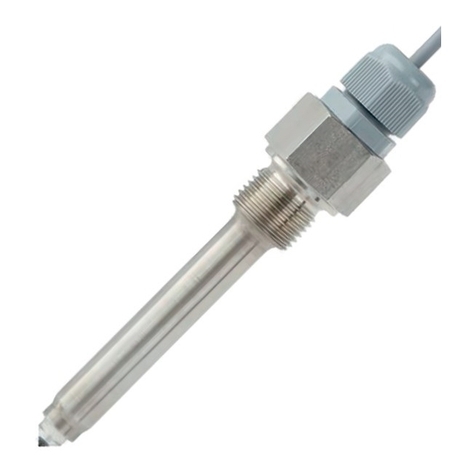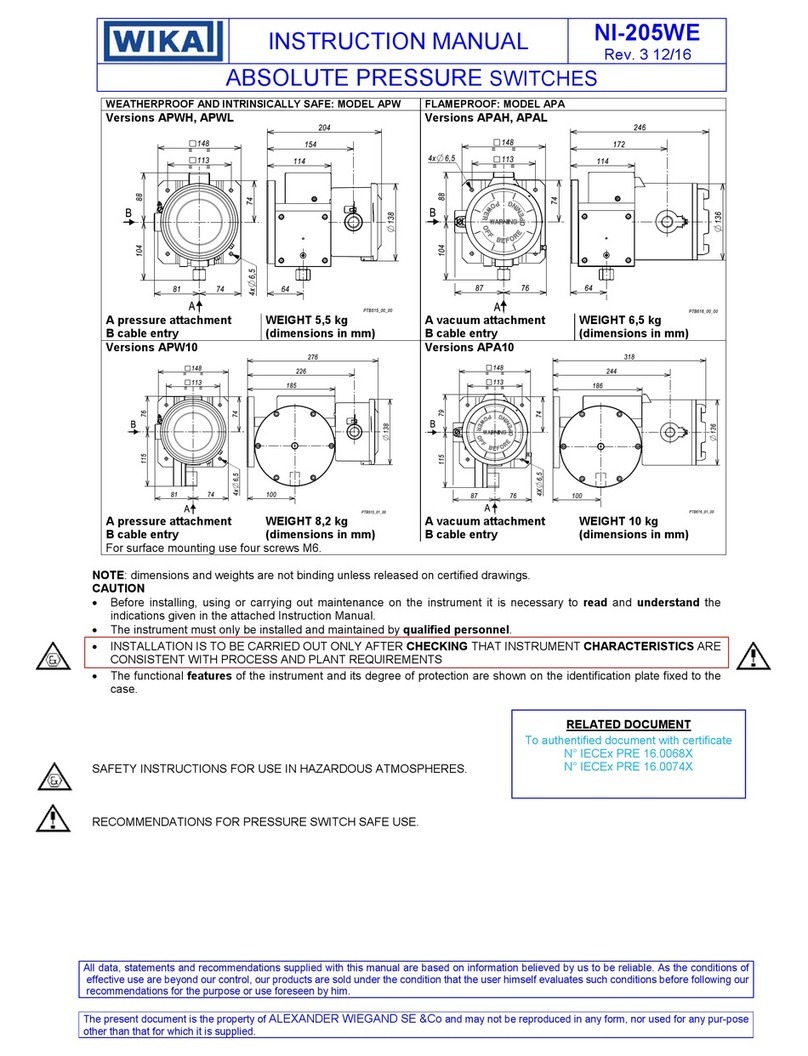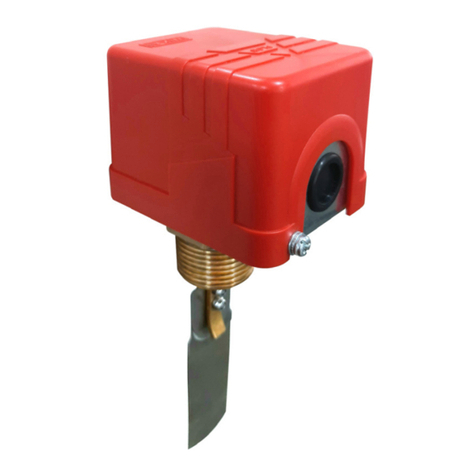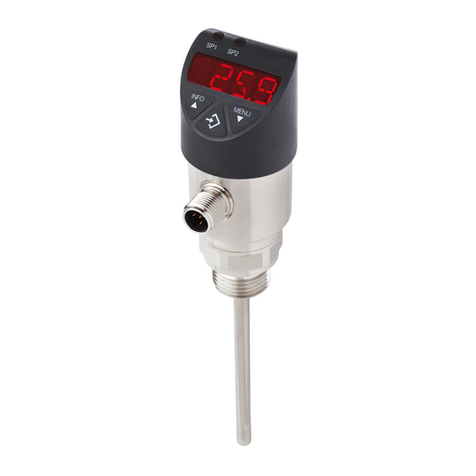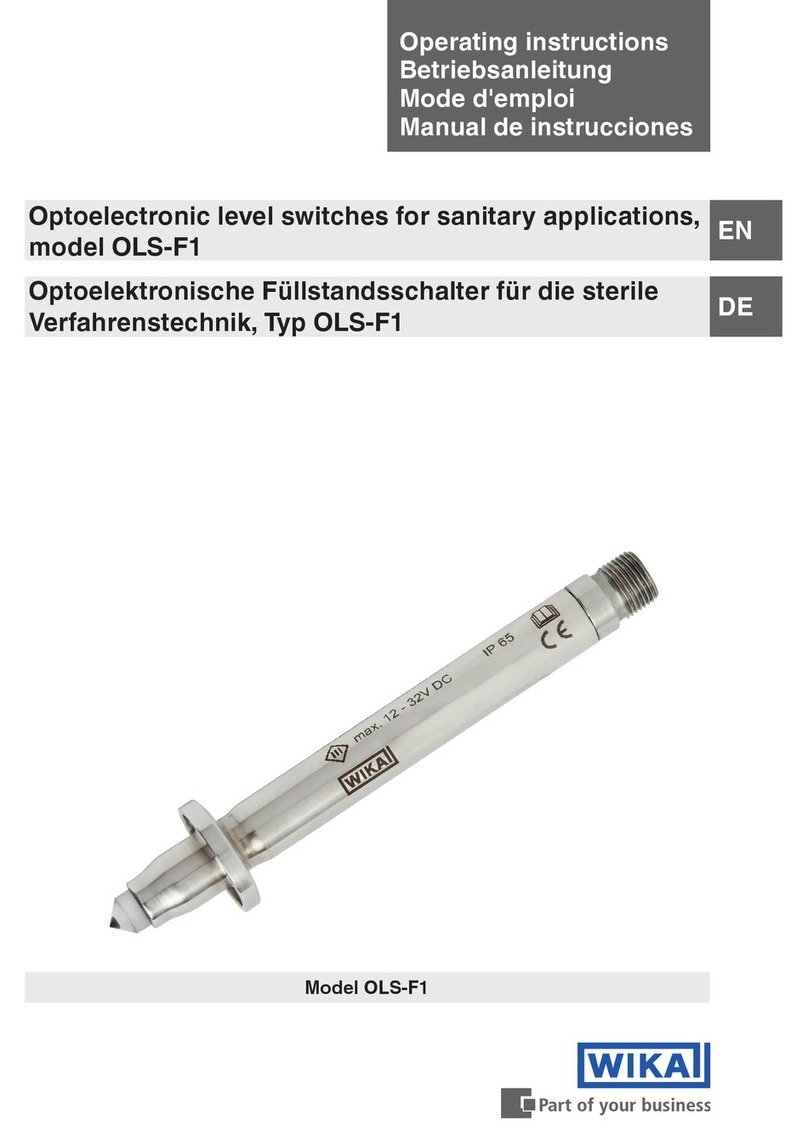
INSTRUCTION MANUAL NI-492WE
Rev.4 05/18
5 of 7
9.5.4 MOUNTING INSTRUMENT WITH JUNCTION BOX
Versions with junction box have three cable entries, a terminal
block with three/six terminals, a terminals identification plate, an
internal and external grounding connections.
The terminals are identified as follows:
Identification No. Function Micro No.
1 Common
1
2 Normally Open
3 Normally Closed
4 Common
2
5 Normally Open
6 Normally Closed
Mounting with cable protected in metal tube is to be carried out
so as to prevent possible condensate from entering the junction
box.
The junction box is to be surface mounted using the bracket
suppiled with it.
Warning: Instruments with aluminium enclosure. The
instrument must be protected against accidental impacts of the
housing.
The instrument is supplied with two protective earthing
connections, one inside and one outside the enclosure.
The connection provide effective connection of a conductor with
a cross-sectional area of at least 4 mm
2
CAUTION: fittings used for the electrical connection of the
flameproof instruments shall be certified according the IEC or EN
standards and shall guarantee instrument degree of protection
(IP66)
CAUTION: cable entries not used must be plugged and sealed
with the plugs provided so as to prevent raining water or other
from entering the junction box. In case of flameproof
instruments these plugs, if not correctly mounted and
blocked to prevent their removal, do NOT guarantee the
mode of protection Ex-d. Furthermore, in order to guarantee
the degree of protection IP65 and the non-loosening of Conduit
Seal or packing gland, it is prescribed to seal the threads of
connection with the same anaerobic sealant used for the plugs.
For instance, a sealant like Loctite ® 648 can be applied on the
thread of plugs, Conduit Seal or packing gland before screwing
them on the box.
9.6 WIRING
The multicore cable used for electric wiring has a 7 mm OD
silicone sheat for one contact versions, 8 mm OD for two contact
versions. Each wire has a section of 0,5 mm
2
(20 AWG) and is
silicone insulated. Wires ends are factory tinned. The colour of
insulator defines the contact function (see Fig. 4 and stampings
on slot cover).
Before starting wiring, check that electric lines are not
powered.
The instrument is to be grounded according to applicable
electrical codes. Make use of the internal yellow-green wire
and, if the cable is not protected by metal tubing, connect the
external screw of the groundig device supplied with the
instrument.
Should the instrument be fitted with junction box, make sure that
no deposits or wire ends remain inside the box. Tightening and
blocking the cover as the wiring of the junction box is finish.
Warning: The intrinsic safety instrument may be equipped with
micro switches SPDT or DPDT. All the electrical connection must
be part of intrinsically safe circuits. The entry parameters relevant
for intrinsic safety are listed on the nameplate of the instrument.
10 - PUTTING INTO OPERATION
The instrument starts operating as soon as is energized.
11 - VISUAL INSPECTION
Periodically check the external condition of the enclosure.
In case of flameproof or intrinsic safety instruments, inspections
of the electrical installation are to be carried out also according
to customer procedures and at least in accordance with Standard
IEC/EN-60079-17.
The flameproof and the intrinsic safety instruments, installed in
explosive atmospheres for the combustible dust presence, must
be periodically cleaned up externally in order to avoid dust
accumulating.
12 - FUNCTIONAL VERIFICATION
This will be carried out according to the Customer’s control
procedures and as minimum yearly if used as an alarm of max
temperature.
The instruments can be verified on the plant if installed as
illustrated in Fig. 11,12 and 13.
To avoid any risk it is recommended check the set point on site
without open the cover of the junction box, without dismount the
cable gland, without unplugging the power cable.
The flameproof or intrinsic safety instruments may be checked
on site only if apparatus suitable for explosive atmosphere are
used.
If this is not the case it is necessary remove the instrument from
the plant and carry out the verification in a testing room.
If the verification of the set point is performed unplugging the
power cable from the terminal block it is recommended power off
the instrument to avoid any electrical hazard
WARNING: Instrument models TXA, flameproof.
Before open the cover of the junction box or the cable gland
check the absence of explosive atmosphere and check that the
instrument is de energized
Verification consists in check the calibration value and possibly
regulating the adjustment bush (see §6) that is separate from the
electrical compartment.
13 - STOPPING AND DISMOUNTING
Before starting the following operations, ensure that plant and
equipment have been put in conditions allowing to carry out
them safely
Remove the power supply (signal) from the electrical line.
With reference to Fig 5,11 and 12.
Loosen and remove the seal press being careful not to bend the
capillary and protective sheath (Fig.4).
Warning: Do not touch the bulb and the parts in contact with the
thermowell if hot.
Loosen and remove the fitting (3) then extract the bulb (5) from
the thermowell (4) holding it by the capillary tube (1), without
bending it.
WARNING: Instrument series TXA, flameproof.
Before open the cover or the cable gland of the junction box
check the absence of explosive atmosphere and check that the
instrument is de energized.
Unscrew the swivel (3) (electric cable tubing).
Remove cover from junction box and disconnect wires from
terminals and grounding screws.
Remove the screws fixing the box to the panel (or pipe) and
remove the instrument taking care to slide electric conductors out
from the case
Mount the cover of the junction box. Insulate and protect cables
around, if any. Temporarily plug the thermowell
In case of flameproof or intrinsic safety instruments, it is
recommended to follow, at least, the standard IEC/EN-60079-17
for the withdrawal from service of electrical apparatus.
14 - DISPOSAL
The instruments are mainly made of stainless steel and
aluminium and therefore, once the electrical parts have been
dismounted and the parts coming into contact with fluids which
could be harmful to people or to environment have been properly
dealt with, they can be scrapped.













